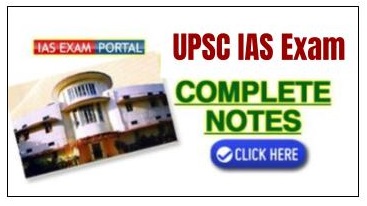(FREE) UPSC Current Affairs 2025 PDF
NEW! The Gist (SEP-2025) | E-BOOKS
(Paper) UPSC : IAS MAIN - 2006 (General Studies - Paper - I)
UPSC:
IAS MAIN - 2006
GENERAL STUDIES Paper- I
Time
Allowed: Three Hours
Maximum Marks: 300
INSTRUCTIONS: Candidates should attempt all question strictly in accordance with the instructions given under each questions. The number of marks carried by each question is indicated at the end of the question.
1. Answer anyone of the following (in about 250 words): 30
a) Regardless of distance in time, there were lots of similarities between
Lord Curzon and Jawahar Lal Nehru. Discuss.
b) How did the Government of India Act, 1935 mark a point of no return in the
history of constitutional development in India?
2. Answer any two of the following (in about 150 words each): 2x15=30
a) What was the attitude of Indian industrialists towards the Indian
National Congress in the pre- independent era?
b) Critically assess Sir Tej Bahadur Sapru's views on Indian Nationalism.
c) Characterise the main features of Indian Renaissance.
3. Write about the following (not exceeding 20 words each): 15x2=30
a) Kalhana
b) Panini
c) Yakshagana
d) Natyasastra
e) Tabaqat-i-Nasiri
t) Madhura Vijayam
g) Pandurang Mahatmya
h) Prithviraj Raso
q) "The Insider"
J) Ali Sardar J afri
k) Aruna Roy
l) Dr. J.C. Daniel
m) Balwant Gargi
n) Dr. JayantNarlikar
0) Shashi Tharoor
4. Answer any two of the following (in about 125 words each): 2x10=20
a) Bring out the prospects of development of alternative energy sources of
India.
b) Blue Revolution has definite advantages in India but it is not free from
environmental impacts. Discuss.
c) Why do the rivers of west coast not form a delta?
5. Write notes on the following (in about 20 words each): 5x2=10
a) Mixed economy
b) Winter rains in India
c) New Moore Island
d) National Water Grid
e) Hussain Sagar
6. Answer anyone of the following (in about 250 words): 30
a) What is right to life and personal liberty? How have the courts expanded
its meaning in recent years?
b) On what grounds can a member be disqualified from either House of Parliament?
7. Answer anyone of the following (in about 250 words): 30
a) What is the 'strategic partnership' between India and United States of
America? What are its implications for both the partners?
b) Discuss economic backwardness as a major challenge of Indian democracy. Can
democracy and development go together smoothly?
8. Answer any two of the following questions (in about 150 words each): 2x
15=30
a) How would you differentiate between the passage of a
Constitution Amendment Bill and of an Ordinary Legislative Bill?
b) How does the Inter-State Council establish co-ordination between States?
c) Is the High Court's power to issue 'writs' wider than that of the Supreme
Court of India?
9. Answer the following questions (in about 20 words each): 5 x2= 1 0
a) Explain the following terms:
b) i) Dissolution of the House
ii) Prorogation of the House
iii)Adjournment of the business of the House
b) What is Consolidated Fund of India?
c) To what extent can the President withhold his assent to a Bill already passed
by the Parliament?
d) What is India's 'Look East' Policy?
e) What is meant by 'empowerment of women' in India?
10. Answer anyone of the following questions (in about 250 words): 30
a) What are the social and economic consequences of abolishing child labor
in India?
b) Explain the implications of the implementation of intellectual Property
Clauses in our patent law regime after joining the WTO.
11. Answer any two of the following questions (in about 125 words each): 2
x I 0=20
a) Explain full convertibility of Indian Rupee.
b) What are the linkages to be developed under the Knowledge Revolution for
Rural India Plan?
c) What do we understand by 'Doha Round' oft talks?
12. Answer any two of the following questions (in about 125 words each):
2x 10=20
a) Explain the social constraints in bringing about gender equality in
Indian society.
a) What are the problems related to the rehabilitation of the mentally
challenged persons in India?
a) Bring out the issues involved in implementing compulsory primary education in
India.
13. Write about the following (in about20 words each): 5x2=10
a) Business Process Outsourcing
b) Female foeticide
c) RCI
d) UNlDO
e) S. Chandrasekhar

